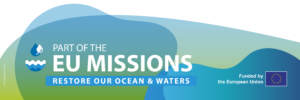Use Case 2
Demonstrating innovative solutions for the removal of pharmaceutical contaminants
Location
Kalaat Al Andalouss, Tunisia

Leading partner

Background
Pharmaceutical industry effluents typically receive limited treatment before being discharged into the environment or municipal sewage systems, primarily through the conventional Activated Sludge Process (ASP). Trace amounts of active pharmaceutical ingredients may enter the environment post-use, posing potential risks by contributing to drug-resistant bacteria and fungi. The average flow rate of the treatment plant is 20 m3/day and includes 3 stages of treatment: Pre-treatment by degreasing, biological treatment and decantation.
- Key facts
In a use case scenario, a remediation solution will be demonstrated at a pharmaceutical company in Kalaat Al Andalouss, Tunisia, to assess the removal efficiencies of pharmaceutical organic pollutants using both conventional ASP and an innovative microfluidic system, aiming to enhance the degradation of contaminants.
The microfluidic system serves as a tertiary treatment for the removal of organic micropollutants from pharmaceutical wastewater. In the same use case, a membrane system will be used as prefiltration prior to the microfluidic system to enhance its effectiveness.
To assist the system’s effectiveness, electrochemical sensors will be developed to monitor the degradation of micropollutants after the remediation process, with a primary focus on the detection of non-steroidal anti-inflammatory drugs.
Expected impacts
- Achieve >95% degradation of emerging pharmaceutical contaminants from industrial effluents.
- Contribute to over 50% reduction in pharmaceutical pollutants at their source compared to conventional techniques, meeting EU permissible limits.
- Evaluate the performance of the monitoring box for efficient measurements of selected relevant chemicals in real wastewater treated directly at the source




